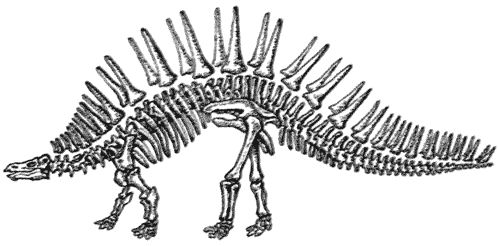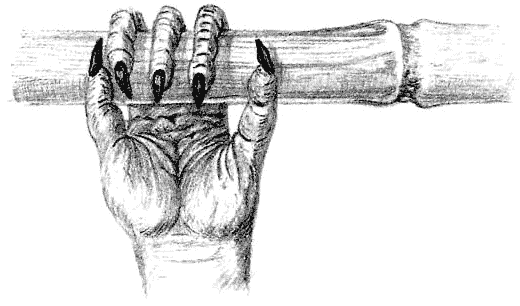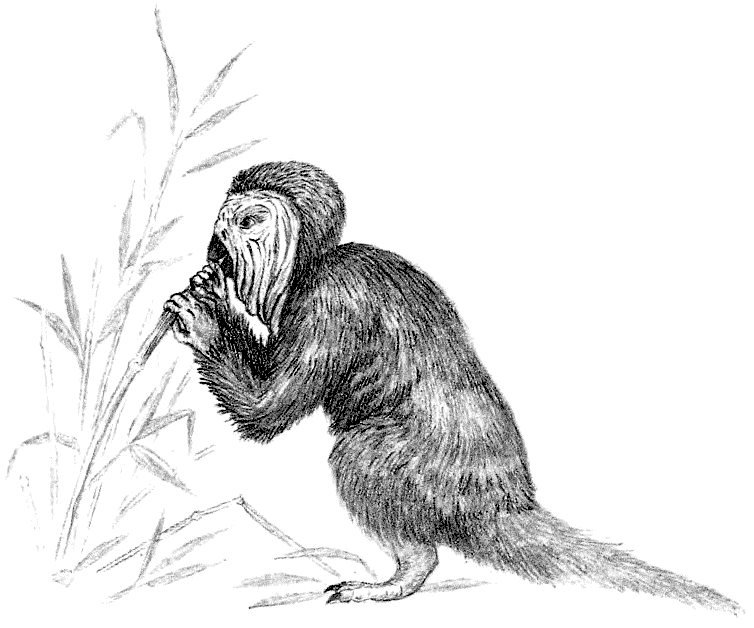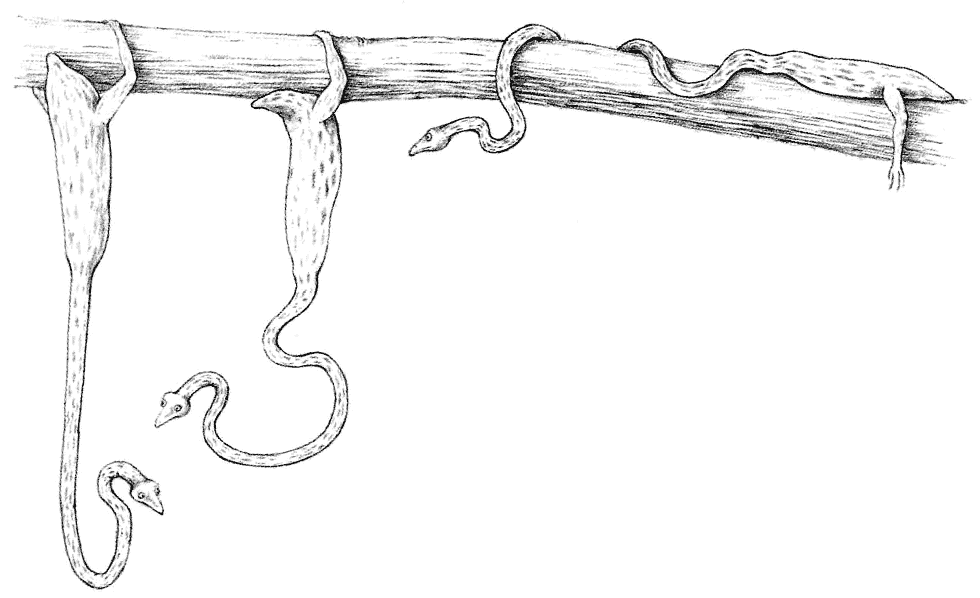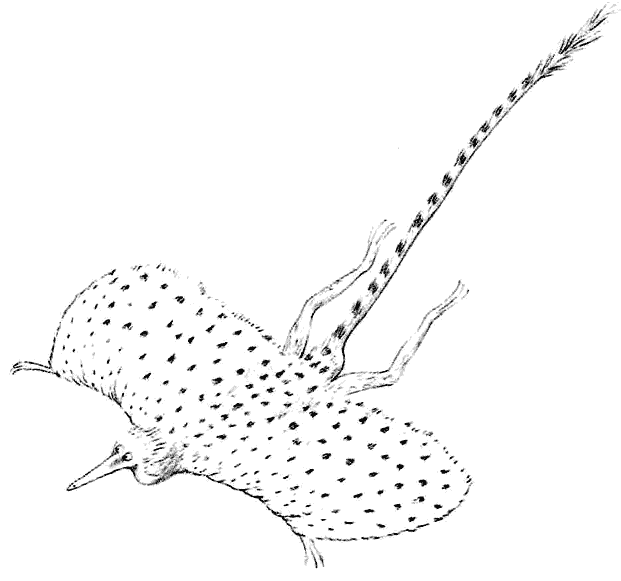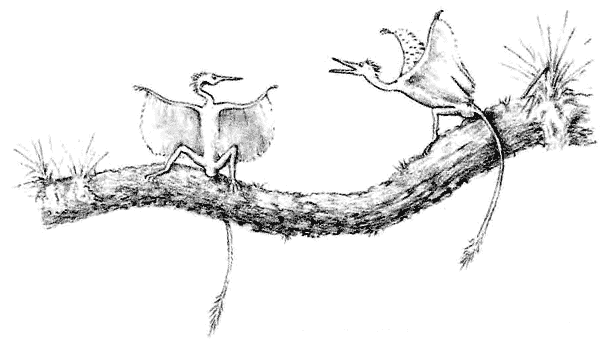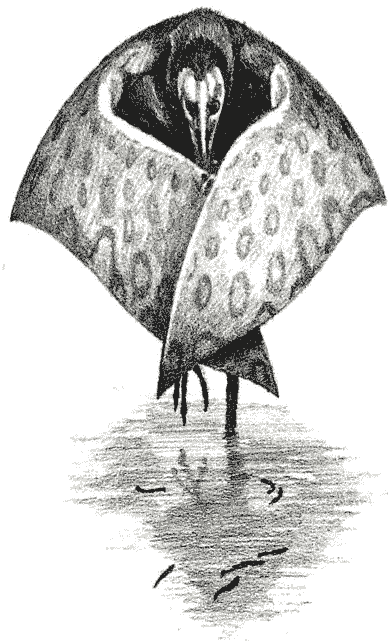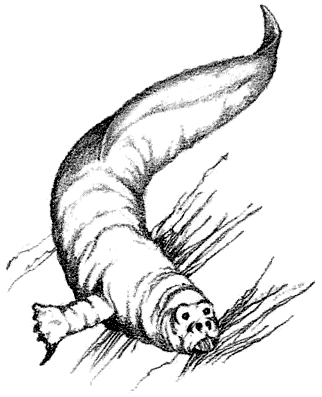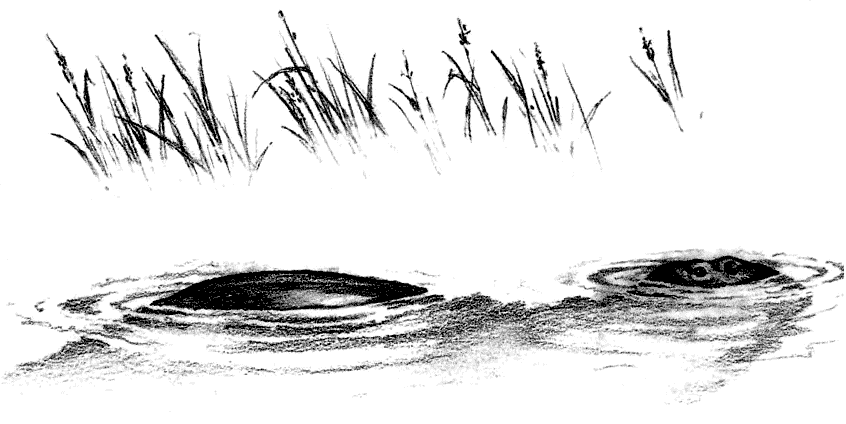| Main | Site library | Forum | Guestbook |
THE ORIENTAL REALM |
   |
|
|
||
The rajaphant herds have evolved defensive habits and take great care to protect their vulnerable young against the predators. The adults cluster round and lash out at the swooping hunters with their long necks and teeth, and their heavy whip-like tails.
|
|
||
|
|
 |
|
Up towards the snowline of the greatest mountain range on Earth,
the range that divides the Oriental from the Palaearctic realm,
there is very little to support
life. Yet even these bleak regions have a number of highly adapted
animals.
The hanuhan is a dinosaur that has evolved to live in these harsh conditions. Its adaptations are similar to those of the balaclav (page 61): deep layers of fat for insulation, and strong claws and beak for scraping the sparse plant material – mosses, lichens and alpine plants – from the rocks crannies. Like the balaclav, too, it has evolved from the successful hypsilophodonts of the Cretaceous period. As such, it has probably come into the Oriental realm across the vast mountain range from the Palaearctic realm, rather than having been brought up from Gondwana in the south on the drifting continent. It is a very nimble animal, sure-footed on crags and confident on the narrowest of ledges. The brain has developed well to control balance and muscular coordination. It could be that the hanuhan evolved from tree-living hypsilophodonts before developing adaptations suitable for its mountaineering life style. |
|
||
|
|
The flurrit is very small, its body and head being about 30 centimetres (1 ft) long. The underside of the wings has a very bright pattern, invisible when the wings are folded, and this is used for display and intimidation.
|
|
|
|
|
|
 |
|||
|
 |
||
CONTENTS
FOREWORD
THE GREAT EXTINCTION 6
WHAT IS A DINOSAUR? 10
THE NEW TREE OF LIFE 12
PALAEOGEOGRAPHY 16
ZOOGEOGRAPHY 18
THE HABITATS 20
THE NEW DINOSAURS 29
THE ETHIOPIAN REALM 30
THE PALAEARCTIC REALM 42
THE NEARCTIC REALM 54
THE NEOTROPICAL REALM 66
THE ORIENTAL REALM 78
THE AUSTRALASIAN REALM 88
THE OCEANS 100
CONCLUSION 108
AFTERWORD 109
GLOSSARY 113
FURTHER READING 115
INDEX 116
ACKNOWLEDGEMENTS 120
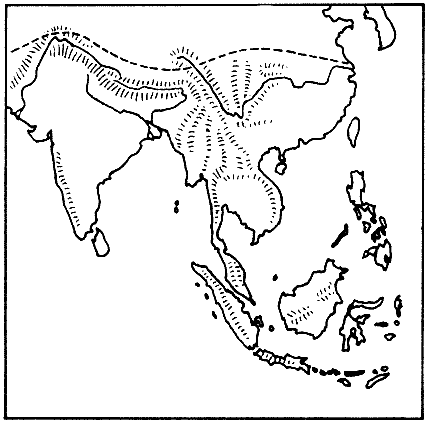 The
Oriental realm is the smallest of the zoogeographic realms, and, in
many respects, it is the most difficult to define. Geographically
it is part of the great northern continent and is that section
of it that lies to the south of the huge barrier of mountain chains
that
crease up its south-eastern corner. However it also encompasses
the cluster of jungle peninsulas and volcanic island archipelagoes
that
reach out across the ocean towards the Australasian realm in the
south east. The most extensive flat area of the realm is a triangular
peninsula
2,000 kilometres (1,250 m) wide by 2,500 kilometres (1,550 m) long,
consisting of an old fragment of Gondwana. Most of the rest of
the realm is quite new and is formed of fold mountains. The northern
boundary
is well defined by the ramparts of the mountains. To the west,
the boundary lies in a desert region that is continuous with that in
the
north of
the Ethiopian realm. The south-eastern boundary is not well defined.
It lies somewhere in the sounds and straits between the strings
of islands. Many animals can move from one island to another by swimming
across the intervening sea areas, or by drifting on mats of vegetation,
or even by walking across when the sea level permits. Some Australasian
animals have penetrated well into the Oriental realm in this way,
and
many Oriental animals have similarly spread into Australasian territory.
It is difficult to place a realistic boundary between the two realms
here.
The
Oriental realm is the smallest of the zoogeographic realms, and, in
many respects, it is the most difficult to define. Geographically
it is part of the great northern continent and is that section
of it that lies to the south of the huge barrier of mountain chains
that
crease up its south-eastern corner. However it also encompasses
the cluster of jungle peninsulas and volcanic island archipelagoes
that
reach out across the ocean towards the Australasian realm in the
south east. The most extensive flat area of the realm is a triangular
peninsula
2,000 kilometres (1,250 m) wide by 2,500 kilometres (1,550 m) long,
consisting of an old fragment of Gondwana. Most of the rest of
the realm is quite new and is formed of fold mountains. The northern
boundary
is well defined by the ramparts of the mountains. To the west,
the boundary lies in a desert region that is continuous with that in
the
north of
the Ethiopian realm. The south-eastern boundary is not well defined.
It lies somewhere in the sounds and straits between the strings
of islands. Many animals can move from one island to another by swimming
across the intervening sea areas, or by drifting on mats of vegetation,
or even by walking across when the sea level permits. Some Australasian
animals have penetrated well into the Oriental realm in this way,
and
many Oriental animals have similarly spread into Australasian territory.
It is difficult to place a realistic boundary between the two realms
here.
